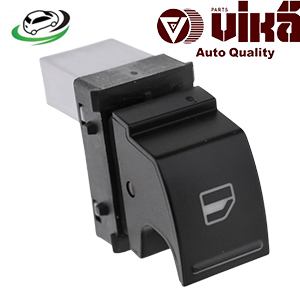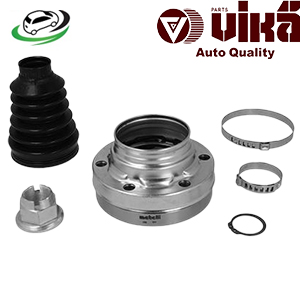-6%
Get AUDI Q7 4L / VW Amarok Touareg Front Inner Drive Shaft CV Joint Kit 7L0498103A
The front inner drive shaft CV (Constant Velocity) joint kit is a critical component in modern vehicles, particularly those with front-wheel drive or all-wheel drive systems. This kit ensures that the power generated by the engine is efficiently transmitted to the wheels, allowing for smooth acceleration and handling. This detailed guide will explore the components, functions, types, benefits, common issues, and maintenance tips associated with the front inner drive shaft CV joint kit.
1. Understanding the Drive Shaft and CV Joint
Drive Shaft: The drive shaft is a mechanical component that transmits torque from the engine to the wheels. In front-wheel drive vehicles, the drive shaft connects the transmission to the front wheels, while in all-wheel drive systems, it connects the front and rear axles.
CV Joint: The CV joint is a type of joint that allows the drive shaft to flex and move while maintaining a constant speed. This flexibility is essential because the suspension system of a vehicle moves up and down, and the wheels turn left and right during steering. The CV joint compensates for these movements, ensuring smooth power transfer.
2. Components of a Front Inner Drive Shaft CV Joint Kit
A typical front inner drive shaft CV joint kit consists of several components that work together to provide reliable performance. These components include:
1. CV Joint:
The CV joint is the centerpiece of the kit. It can be of two types: ball-type or tripod-type. Each type has its design and specific application.
- Ball-Type CV Joint: This type utilizes balls and grooves to allow flexibility in multiple directions. It is commonly found in front-wheel drive vehicles and provides excellent angular movement.
- Tripod-Type CV Joint: This type consists of three cylindrical rollers that move within a yoke. It is often used in rear-wheel drive applications or in some all-wheel drive vehicles.
2. Drive Shaft:
The drive shaft connects the CV joint to the transmission on one end and the wheel hub on the other. It is typically made from high-strength steel or aluminum to withstand the stresses of power transfer.
3. Boot:
The CV boot is a rubber or plastic cover that protects the CV joint from dirt, debris, and moisture. It also contains lubricant, ensuring that the joint operates smoothly. The boot is critical for the longevity of the CV joint.
4. Grease:
The kit includes high-quality grease designed for use in CV joints. This grease lubricates the joint, reducing friction and wear.
5. Clamps:
Clamps secure the CV boot in place, preventing it from slipping off and ensuring that the grease remains contained within the joint.
3. Function of the Front Inner Drive Shaft CV Joint Kit
The primary function of the front inner drive shaft CV joint kit is to facilitate the transfer of power from the transmission to the wheels while accommodating the suspension movement. Here’s how it works:
1. Power Transfer:
When the engine generates power, the transmission sends this power through the drive shaft to the CV joint. The joint’s design allows it to maintain a constant speed while the vehicle is in motion.
2. Flexibility:
As the vehicle moves over uneven surfaces or during cornering, the suspension system flexes. The CV joint allows for this flexibility by accommodating the angles created by the suspension movement without losing power transfer efficiency.
3. Smooth Operation:
The CV joint enables smooth acceleration and deceleration. It minimizes vibrations and ensures that the driver experiences a comfortable ride without noticeable jerks or lags.
4. Benefits of a Front Inner Drive Shaft CV Joint Kit
A properly functioning front inner drive shaft CV joint kit offers several advantages:
1. Enhanced Performance:
The CV joint ensures that power from the engine is efficiently transmitted to the wheels, enhancing overall vehicle performance. This efficiency translates to better acceleration, smoother handling, and improved fuel economy.
2. Improved Handling:
The flexibility of the CV joint allows for precise handling during cornering and turning. This flexibility ensures that the wheels maintain traction with the road, improving vehicle stability and control.
3. Reduced Noise and Vibration:
A well-maintained CV joint minimizes noise and vibration during operation. This contributes to a quieter and more comfortable driving experience.
4. Longevity of Components:
By preventing excessive wear and tear on the drive shaft and transmission, a healthy CV joint kit extends the lifespan of these components, reducing the likelihood of costly repairs.
5. Enhanced Safety:
A malfunctioning CV joint can lead to loss of power to the wheels, posing safety risks during driving. A properly functioning kit helps ensure that the vehicle operates safely under various conditions.
5. Common Issues with Front Inner Drive Shaft CV Joint Kits
Despite their durability, CV joints can experience several common issues, often leading to noticeable symptoms. Recognizing these symptoms early can help prevent more significant problems down the line.
1. Cracked or Torn Boots:
The CV boot can crack or tear due to exposure to heat, moisture, or debris. A damaged boot allows grease to escape and contaminants to enter the joint, leading to premature wear and failure.
2. Excessive Play or Movement:
If the CV joint has excessive play or movement, it may indicate wear or damage. This can result in a clicking or popping noise when turning, which is often a sign that the joint needs to be replaced.
3. Grease Leakage:
If grease is leaking from the boot, it’s a clear indication of a problem. Without sufficient lubrication, the CV joint can wear out quickly, leading to failure.
4. Noises During Turns:
Hearing clicking, popping, or grinding noises when turning or accelerating is often a sign of a failing CV joint. This symptom should not be ignored, as it can lead to further damage.
5. Vibration or Shuddering:
Excessive vibration or shuddering during acceleration can indicate a problem with the CV joint or drive shaft. This symptom may worsen with speed and can affect overall driving comfort.
6. Maintenance Tips for CV Joint Kits
Regular maintenance of the front inner drive shaft CV joint kit is crucial to ensure its longevity and performance. Here are some essential maintenance tips:
1. Inspect CV Boots:
Regularly inspect the CV boots for any signs of cracking, tearing, or deterioration. Addressing any damage promptly can help prevent contamination of the CV joint.
2. Keep the Joint Lubricated:
Ensure that the CV joint is adequately lubricated with high-quality grease. If the joint is disassembled for any reason, it’s essential to clean and re-grease it before reassembly.
3. Avoid Excessive Angles:
Excessive angles or bends in the drive shaft can put undue stress on the CV joint. When working on suspension components, ensure that the drive shaft is not excessively bent or angled.
4. Monitor for Noises:
Pay attention to any unusual noises while driving, especially when turning or accelerating. Early detection of issues can prevent further damage and costly repairs.
5. Schedule Regular Inspections:
Incorporate regular inspections of the CV joint and associated components into your vehicle’s maintenance schedule. A professional mechanic can help identify any potential problems early on.
7. Replacing a Front Inner Drive Shaft CV Joint Kit
If a CV joint fails or shows signs of significant wear, it may need to be replaced. Here’s a basic overview of the steps involved in replacing a front inner drive shaft CV joint kit:
1. Gather Tools and Parts:
Before beginning the replacement, gather the necessary tools, including a socket wrench, pliers, and a CV joint removal tool. Purchase a replacement CV joint kit compatible with your vehicle’s make and model.
2. Lift the Vehicle:
Use a jack to lift the front of the vehicle and secure it with jack stands. Ensure the vehicle is stable before proceeding.
3. Remove the Wheel:
Remove the lug nuts and take off the wheel to access the drive shaft.
4. Disconnect the Drive Shaft:
Depending on the vehicle, you may need to remove bolts or clips connecting the drive shaft to the transmission and wheel hub. Carefully disconnect the drive shaft from both ends.
5. Remove the CV Joint:
If the CV joint is part of the drive shaft assembly, it can be removed by separating it from the shaft. Use a CV joint removal tool if necessary.
6. Install the New CV Joint:
Position the new CV joint in place and secure it according to the manufacturer’s instructions. Ensure that it is properly lubricated before installation.
7. Reconnect the Drive Shaft:
Reattach the drive shaft to the transmission and wheel hub, ensuring that all bolts and clips are tightened securely.
8. Reinstall the Wheel:
Put the wheel back on and secure it with lug nuts. Lower the vehicle back to the ground.
9. Test the Vehicle:
Start the vehicle and take it for a test drive to ensure that the new CV joint is functioning properly. Listen for any unusual noises and monitor for smooth operation.
Conclusion
The front inner drive shaft CV joint kit is a vital component of a vehicle’s drivetrain, facilitating smooth power transfer to the wheels while accommodating suspension movement. Understanding its components, functions, benefits, common issues, and maintenance tips is essential for any vehicle owner. Regular inspections and timely replacements can prevent costly repairs and ensure a safe and comfortable driving experience. If you notice any symptoms of a failing CV joint, it’s crucial to address the issue promptly to maintain the performance and safety of your vehicle.
Follow us on Facebook for more parts.




Reviews
Clear filtersThere are no reviews yet.